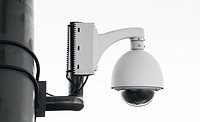How to unlock the hidden value of security technology

Image by Jackson Sophat from Unsplash
Doing more with less. Accomplishing the same tasks with fewer resources. Driving operational efficiencies. These phrases have become painfully common. As organizations adapt to societal change and financial pressures — including recent recession anxieties — business leaders are asked to do the impossible.
But, in reality, it’s not impossible. Time and again, organizations accomplish more with less and end up thriving. One method for achieving this daunting task is to look inward at existing processes and technologies. Internal operationalization is particularly helpful in times of stress, as this process can expedite current workflows without requiring significant spend or organizational changes.
Perhaps surprisingly, security systems are a prime example of existing tech that leaders can use to unlock revenue-saving insights. According to research conducted by STANLEY Security, 46% of enterprises have traditional physical security technology like video surveillance, access control systems and intrusion alarms, and 91% of organizations have adopted cloud-based solutions. By pairing these technologies with artificial intelligence (AI) and machine learning (ML), business leaders can unveil a new layer of critical insights that build a more robust security ecosystem and create more efficient workflows.
Bolstering health, safety and asset security using AI and ML
Physical security remains top of mind for most business leaders. STANLEY Security research found that 72% of leaders identify the security of their organization’s assets as their primary business concern. The health and safety of employees come in at a close second (59%). This trend likely explains why most enterprises (91%) adopted cloud-based technologies to strengthen asset protection during the pandemic.
However, despite the easing of lockdown protocols, workplace health and safety concerns remain incredibly complex. Nearly 60% of business leaders expect to welcome all employees back to the office over the next 18 months, while 30% are implementing a hybrid approach and 7% are entirely virtual. As modern employees choose to locate nearly anywhere in the world, business leaders must create a safe remote workplace. And as other employees decide to navigate traditional office life once again, leaders must offer the same degree of protection to on-site and off-site team members.
A robust hybrid security plan doesn’t need to include directionless spending and hordes of new security installations. In fact, for most enterprises — those who have implemented cloud security solutions or traditional physical security technology — the answer to modern security concerns lies in existing tools. The key is learning to leverage these tools effectively.
Think of all the daily patterns and movements that security technologies record (either literally, in the case of video surveillance installations, or figuratively, in the case of access control or alarm systems). The information that is already being gathered by these tools can range from the average number of employees in a building to false alarm frequency to optimal temperature settings. Alone, this information may not appear enticing. But when coupled with AI- and ML-driven insights, this information becomes crucial to developing a predictive security program.
For example, an alarm panel empowered with AI and ML can track alarm frequency and develop a dashboard of insights for business leaders and monitoring center operators to review. Even more promising, leaders can leverage AI and ML tech to help predict when the next alarm may occur, allowing the business to address security events proactively. One of the greatest uses of this type of information is to eliminate noise and filter out false alarms more accurately.
Operationalizing business intelligence through hidden security insights
Data from the 2022 STANLEY Security Industry Trends Report reveals that only 29% of organizations have implemented AI- and ML- empowered integrated analytics. However, 78% are interested in learning more and would consider implementing these technologies to optimize operations. Clearly, business leaders are intrigued by the intelligence that security technology hides. The key, then, is to understand these insights — and devise a strategy to unlock them, spurring greater operational efficiency.
The latent information that security systems gather can provide crucial assistance with repetitive daily tasks. Using real-time location systems (RTLS), for instance, professionals can track the precise location of vital assets as well as the environment those assets exist in (i.e., gauging current temperature or storage location). This information alone is critical. When leveraged alongside AI and ML insights, however, the data becomes even more valuable. Enhanced security technology can review the location of singular assets and compile a locational history database among a vast array of assets. The system can then easily cross-reference this information to suggest areas for improvement. For example, maybe assets are often bottlenecked at a particular location — AI and ML can isolate this information and provide patterns that point to the cause.
This information provides human workers with deep, actionable insights, as well as more time in which to accomplish those tasks. Instead of manually tracking asset locations or statuses and remediating problems on the go, employees working alongside AI and ML can focus on revenue-generating initiatives while passive technologies handle the minutiae.
Depending on the setting, that difference can go a long way. For instance, healthcare workers may have more one-on-one time with patients in need. Or, retail workers may be able to provide a better standard of service to each customer they encounter. And on a macro scale, business leaders can take advantage of these insights to make powerful, more informed decisions.
Overcoming obstacles to AI and ML adoption
Given the breadth of insights that security technologies provide, why are so many businesses neglecting AI and ML implementation? The barrier to entry with these technologies may appear daunting. But the good news is that the majority of leaders already have the basic security technology in place to leverage AI and ML in their organization. Their next step should be to invite a trusted partner to the table.
A trusted partner will review existing technologies and make recommendations for a more advanced security ecosystem. Remember that AI and ML implementation doesn’t have to be an “all or nothing” proposition. In many cases, security providers will suggest a tailored approach that updates certain functionalities and opts to leave others as-is, based on the desired level of insights and budget. Adopting software as a service (SaaS) tech in this way can help businesses scale their technology appropriately — both technologically and financially.
This article originally ran in Security, a twice-monthly security-focused eNewsletter for security end users, brought to you by Security magazine. Subscribe here.
Looking for a reprint of this article?
From high-res PDFs to custom plaques, order your copy today!





